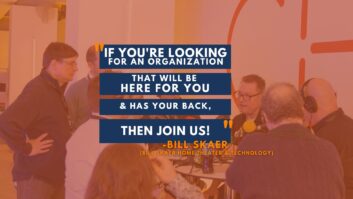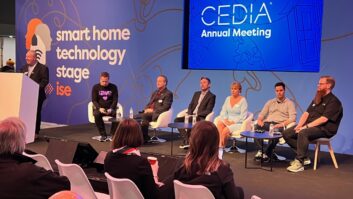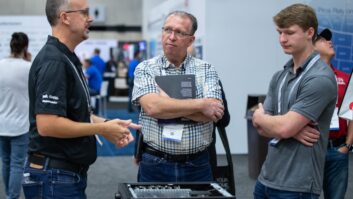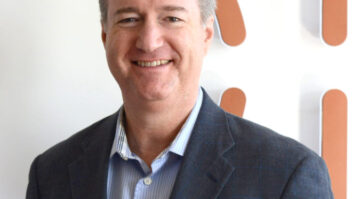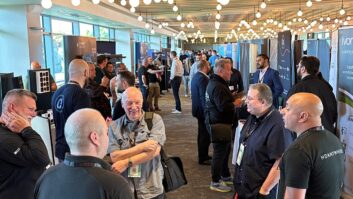Once again this year, the CEDIA Region 1 AGM was preceded by the association’s Business and Technology Forum. This consisted of four sessions, whose subjects had been chosen following a survey carried out by CEDIA in July to determine the real-world issues and technologies of greatest relevance to custom installers.
Each session was led by Matt Dodd of thinkingbricks, CEDIA’s education chair, and featured contributions from guest speakers; however, Dodd did an excellent job in maintaining high levels of discussion and dialogue with the audience throughout the day. The first session, entitled ‘Lots of small jobs versus fewer big jobs’ produced a wide-ranging discussion about how custom installers can manage the project mix. There were different opinions on whether or not to accept smaller, less profitable jobs in the hope that larger ones will follow. One delegate said that if you put in a TV for a multimillionaire one week, he may call you next week when his son is moving into a flat in Knightsbridge. Another said that having developed a good relationship with an architect, that architect now goes to clients on his behalf and tells them to accept his prices. However, among developers, said another, there’s an increasing trend to drive down the price of jobs and put everything out to tender next time – so there’s no relationship being built. Installers, particularly larger ones with higher overheads, may have to turn down more straightforward jobs. If you quote a ‘fair price’ for hanging a TV, said one delegate, you will lose money. Unfortunately, said another, the cost of hanging a £299 screen hasn’t changed from the days when that product cost £5,000. Larger companies can benefit from having a mix of jobs sizes running at once, as it can prevent engineers from being unoccupied between jobs. Any spare resource can be sent on site to the big project, where there will always be something for them to do. Very small companies, however, may find that big projects monopolise their time during the week, leaving little time to send out proposals for future jobs. Other factors affecting project profitability include: -In smaller jobs, are there ‘margin makers’ in the kit list? -Complexity – either in the sales process or the install – will reduce profitability. -Don’t forget that the sales process has costs attached. -Think hard before taking a job that’s worth more than a month’s turnover. There may be significant cashflow risks, particularly if it overruns. Finally, here are some advice points from the session, from delegates and from business consultant Jon Peterman of Icon Business Solutions (who is offering a free company ‘health check’ to CEDIA members): -Draw up a business plan – it doesn’t have to be 50 pages. Don’t just do it for the bank and leave it in a drawer – measure your performance against it. -Understand the day-to-day fixed and variable costs of your business, and build them into your costing structure. -Keep timesheets, and review the job when completed. If unexpected things happened, do you need to change any processes? -For bigger jobs, put in a certain number of meetings into your quote and make it clear that you will charge for additional ones. -For long jobs, set up stage payments so that your cashflow remains healthy. Try to arrange it so that you at least break even before the final payment. @page_break@ Protectionist policies The next session was called ‘Protectionist Policies’, but it soon became clear that this was a rather pejorative name for a discussion about, as Matt Dodd put it, “How we can show customers that the CEDIA badge is a badge of quality.” It was generally felt desirable that CEDIA’s membership be enlarged – to make the organisation stronger, and so that it could lobby government. As executive director Wendy Griffiths explained, a lobbying body needs to represent at least 60% of its industry to gain the ear of the British government. Looking at the UK, she said, this would mean about 400 CEDIA members, compared with around 150 currently. The size of the European industry was not known, although research should have an answer to this within 12 months, she added. Apart from government, there were other suggestions for whom CEDIA should be trying to influence. One was specifiers – and here, the CEDIA CPD programme materials were mentioned as a great opportunity for custom installers to get in front of architects and other professionals, who need to earn CPD credits. Another was the public at large – particularly since many manufacturers target consumers directly. So how could CEDIA recruit extra members without lowering quality standards? One suggestion was a multi-tier system of membership standards. Where there was least agreement in the room was around how to obtain information about how projects are carried out, so that standards could be independently evaluated. Some welcomed the idea of random post-completion inspections, citing a parallel with NACOSS or SSIB practice in security installations. However, others dismissed the idea as unworkable, intrusive to the client or potentially damaging to the installer, particularly given the tendency of some clients to blame installers for things outside the latter’s control, such as temperamental Sky boxes.
@page_break@ HD signal distribution The third session provided some interesting real-world perspective on HD signal distribution. The panel – Jason Aldous from distributor Aldous Systems, Kevin Swanton from Asheridge Communications, Rufus Greenway from Sound Environment and Chris Pinder from Connectivity UK – all gave valuable insights from their experience with the technology. One thing that installers can be grateful about is that the technology has become much more reliable in the past year or so, particularly with the advent of HDBaseT. However, there are still potential pitfalls, particularly when you’re working near the acceptable limits of what can be achieved. HDMI signals should be able to run about 80m over Cat5, if the cable quality is good; beyond this, fibre should be used. Problems can also occur when installers don’t measure the cable length, or take over a project and don’t know what type of cable was used. There were many recommendations for the use of the right testing equipment: an HDMI tester, an HDMI tester screen and a Fluke meter to measure the length and speed of the cable. EDID management products were also recommended by some. While test equipment is expensive, it can save many hours of trial and error, and so can pay for itself after only a few uses. The level of expertise in the audience was borne out by one installer’s account of an HDMI signal cutting out when a fluorescent light (with power cables 15m away from video cables) was switched off was confidently diagnosed as a ground loop problem. And Matt Dodd gave an amusing account of talking to a client who had subsequently fitted an oscillating fan in the same room as his TV, which was interfering with the HDMI signal. “But it wasn’t my fault,” said Dodd, “I was here first!” Matt Nimmons, CEDIA’s operations director, closed by reminding delegates that there are free white papers on HDMI available on the CEDIA website.
@page_break@ Cloud services The final session of the afternoon was on cloud services. Following a brief overview of the history and the some of the current providers of cloud services – provided by yours truly – Andy Kirkpatrick of BT gave a detailed account of the telco’s plans for the Cloud, and some of its supporting technologies.
For instance, technology that enables content to be cached close to customers means that viewers can watch BBC iPlayer content without any buffering; the BBC, he said, has described BT Vision as the most reliable implementation of the iPlayer today. Another interesting cloud-based offering from BT is the OnLive gaming platform, which allows access to numerous games for a fixed cost of £10 per month. The minimum speed that the service runs on is 3Mbps.
The Q&A provided some more custom install-specific information. In answer to a question about multiroom TV distribution, Kirkpatrick said that BT is looking at using thin-client set-top boxes running a standard technology such as DLNA. He also said that the company is in discussions about licensing its technology to TV manufacturers, in order to eliminate the need for a set-top box, although he could give no details.
One got the feeling that a channel of communication had opened up between the CI community and BT at a senior level – Kirkpatrick’s job title is director, connected home for BT’s Innovate and Design division. For instance, there was a discussion about why installers sometimes replace the BT HomeHub with another manufacturer’s router. MAC address binding, which was one of the reasons given, turned out to be achievable on the HomeHub.
For cloud services to be adopted widely, Kirkpatrick felt that the technology must become simple and intuitive. DLNA, for example, he felt, was “not there yet” in this regard. And on the subject of broadband coverage, including so-called ‘notspots’, he felt that while market forces could go some of the way – Fujitsu has declared an interest in providing a solution in the rural environment – there was sometimes a need for public funding, as had been the case in rolling out Infinity, BT’s fibre service, in Northern Ireland. The Business and Technology Forum was sponsored by Connectivity UK, Opus, Philips Dynalite, Power Ethernet, Rako, Speakercraft and URC, which all showcased products at the event. www.cedia.co.uk
CEDIA Forum discusses the issues
Once again this year, the CEDIA Region 1 AGM was preceded by the association’s Business and Technology Forum. This consisted of four sessions, whose subjects had been chosen following a survey carried out by CEDIA in July to determine the real-world issues and technologies of greatest relevance to custom installers. Paddy Baker reports

